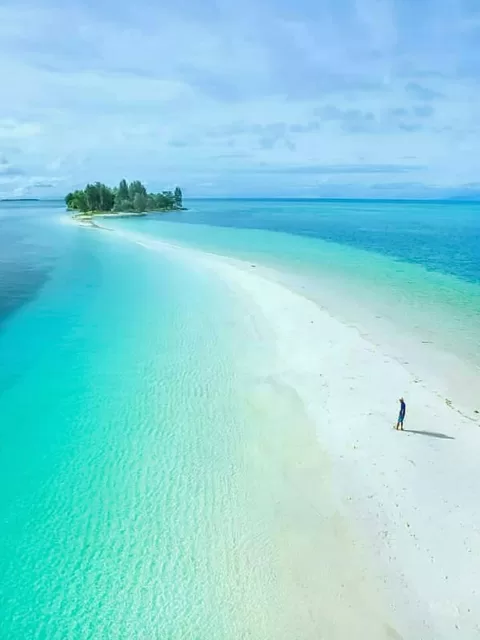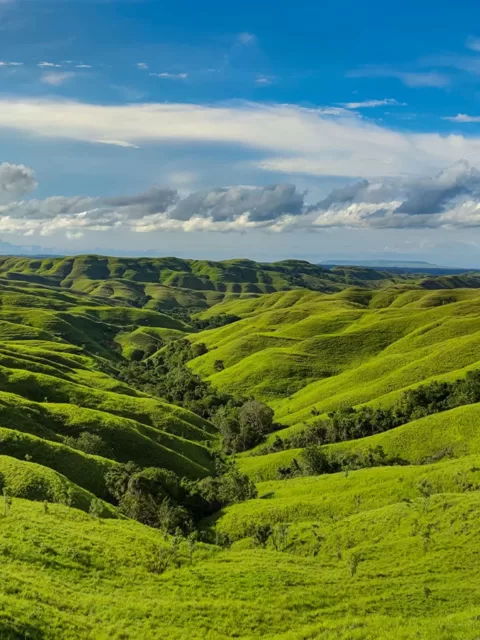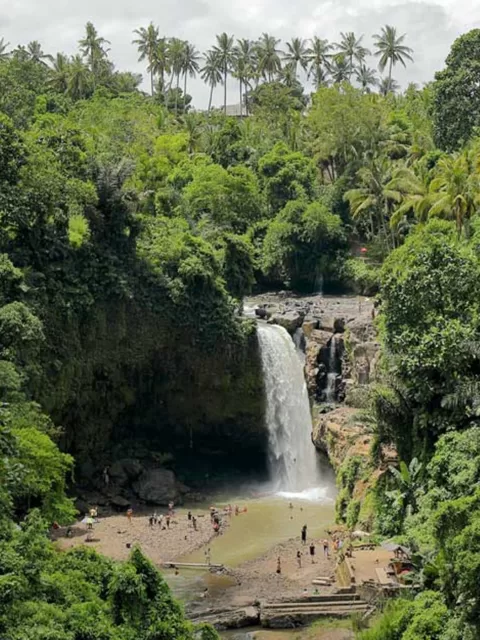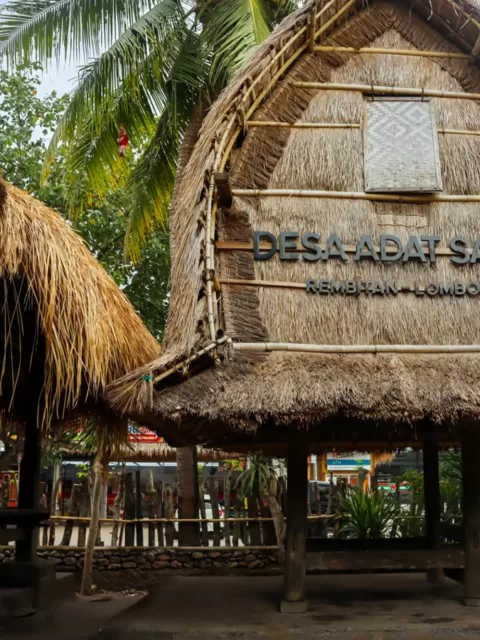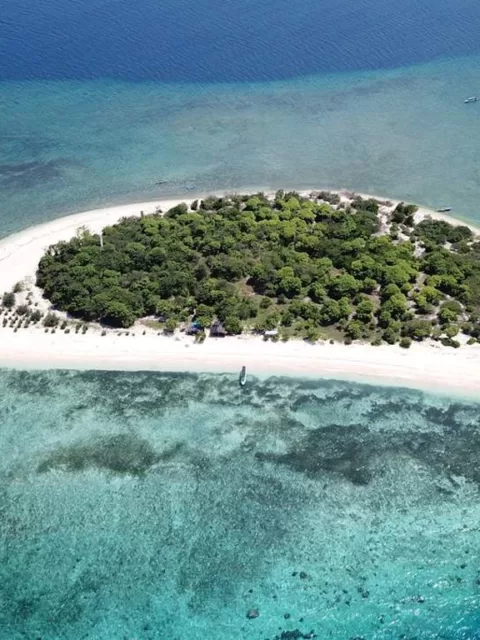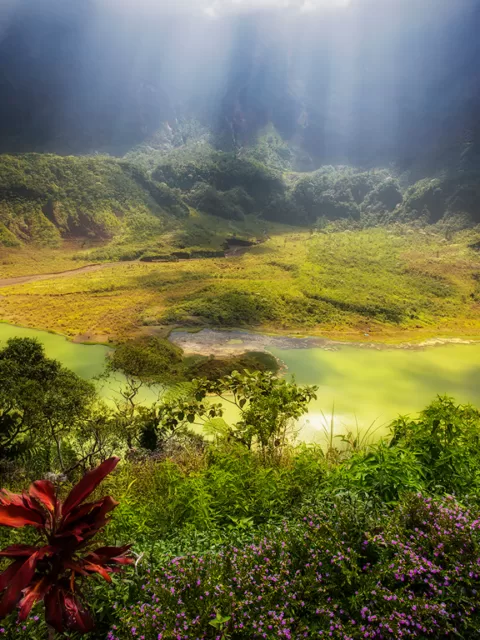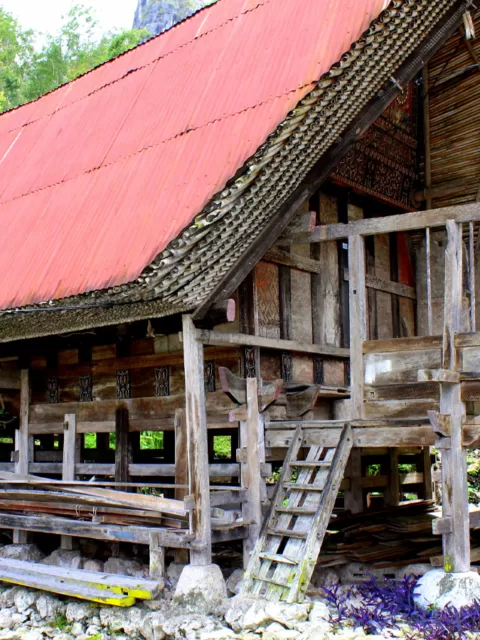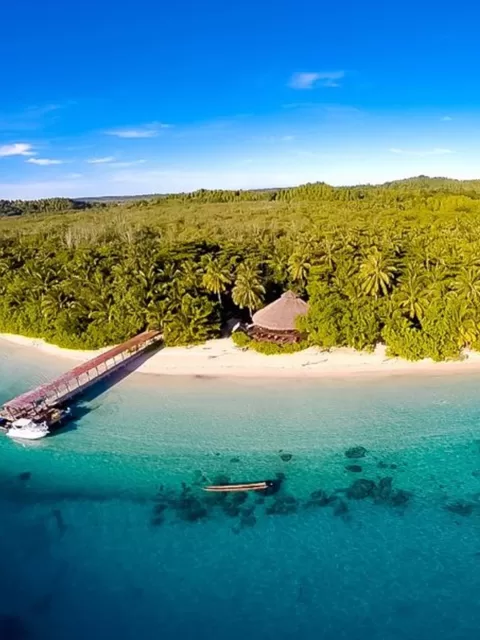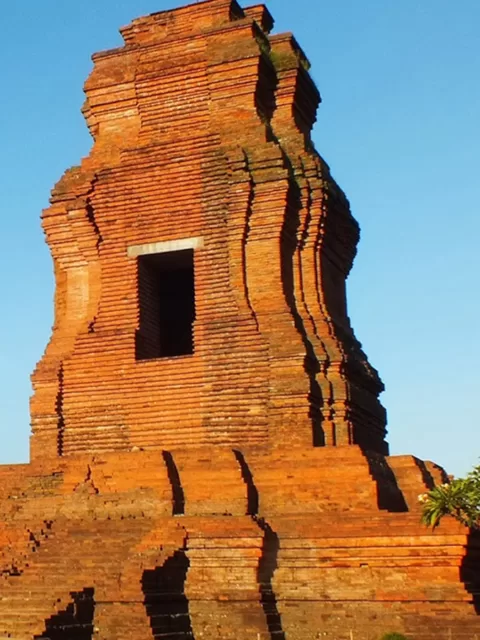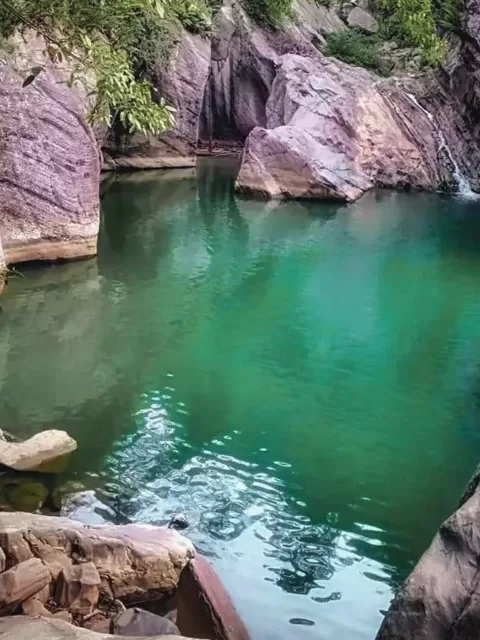Minangkabau Majesty Unraveling the Matrilineal Marvel of Suku Minangkabau’s Legacy
I. Introduction
A. Brief overview of the Minangkabau people (Suku Minangkabau) The Minangkabau people, often referred to as Suku Minangkabau, are one of the ethnic groups of Indonesia. Hailing primarily from the West Sumatra province, they are recognized not just for their matriarchal society but also for their rich cultural heritage. Their unique traditions and customs make them one of the most fascinating indigenous communities in Indonesia, and their impact is felt deeply in the broader narrative of the tribal cultures of Indonesia.
B. Significance of Minangkabau culture in the context of Indonesia travel For any traveler eager to immerse themselves in the ethnolinguistic groups in Indonesia, the Minangkabau region offers an unparalleled experience. As guardians of an age-old culture, they bring forth a side of Indonesia marked by ancient rituals, architectural wonders, and a cultural diversity that is second to none. A journey through the Minangkabau heartlands promises insights into indigenous storytelling, native customs and rituals, and the incredible ethnographic diversity of Indonesia.

II. Historical and Cultural Background
A. Historical origins and heritage of the Minangkabau The Minangkabau people trace their roots back to ancient times, preserved through indigenous storytelling in Indonesia. Their legends and myths, passed down generations, not only tell tales of their origins but also reflect their philosophy and worldview. These ancestral practices of Indonesian tribes set the Minangkabau apart, and their legacy has been carefully preserved and celebrated.
B. Connection between Minangkabau culture and Indonesian history Throughout Indonesian history, the Minangkabau have played a significant role, not just as traders and merchants but also as influencers of cultural and philosophical thoughts. Their matriarchal society, a rare phenomenon among traditional Indonesian tribes, provides a unique perspective into the societal structures and dynamics of indigenous communities in Indonesia.
C. Influence of Minangkabau culture on modern Indonesia travel The rich tapestry of Minangkabau culture has significantly enhanced Indonesia’s travel experience. From their iconic rumah gadang (big houses) with buffalo-horn-shaped roofs to their traditional dances and ceremonies, the Minangkabau offer a cultural feast for tourists. Their vibrant history and traditions breathe life into the stories of Indonesia, making them an indispensable part of the cultural tourism circuit.

III. Diversity within Minangkabau
A. Different Minangkabau subgroups and regions While the Minangkabau are primarily known as a unified entity, there exists a beautiful diversity within their communities. Different regions within West Sumatra have their distinct dialects, customs, and traditions, reflecting the rich ethnic identities in Indonesia.
B. Geographical distribution of Minangkabau communities The Minangkabau are predominantly settled in the West Sumatra province. However, due to migrations over centuries, they have established communities in various parts of Indonesia and even neighboring countries. Each of these settlements carries with it a piece of the Minang heartland, ensuring that their culture and traditions thrive across borders.
C. Unique cultural aspects of specific Minangkabau subgroups Each Minangkabau subgroup brings with it unique traditions that enhance Indonesia travel experiences. For instance, while the folks from Padang are known for their spicy cuisine, those from the highlands may be recognized for their traditional textiles. These myriad cultural elements are a treasure trove for travelers keen on diving deep into Indonesia’s cultural mosaic.

IV. Minangkabau Traditions and Rituals
A. Overview of traditional Minangkabau practices and customs The Minangkabau are guardians of age-old customs and rituals, many of which revolve around their matriarchal lineage. From birth ceremonies to weddings, their life events are marked by unique traditions that reflect their philosophy and worldview. These native customs and rituals in Indonesia provide a window into their soul, showcasing a community deeply rooted in its beliefs.
B. Rituals, ceremonies, and festivals The Minangkabau calendar is dotted with numerous ceremonies and festivals, from harvest festivals to rites of passage ceremonies. Each of these events offers a glimpse into the indigenous heritage in Indonesia, with elaborate dances, songs, and feasts.
C. Indigenous arts, crafts, and performing arts The Minangkabau are skilled artisans. Their traditional textiles, notably the songket, are sought after for their intricate designs. Their dances, like the plate dance or tari piring, and traditional music forms are not only a treat for the senses but are also narratives of their history and beliefs. For tourists keen on cultural experiences, these indigenous arts and crafts provide a deep dive into the heart of Indonesia’s tribal traditions.

V. Minangkabau Cuisine
A. Traditional Minangkabau dishes and recipes Minangkabau cuisine, often simply called “Padang cuisine” after the capital city of West Sumatra, is renowned for its rich flavors and spicy dishes. Rendang, a slow-cooked dry curry deeply spiced with ginger, turmeric, lemongrass, and garlic, is perhaps the most iconic of all Minangkabau dishes. Such traditional dishes carry with them the traditional knowledge of Indonesian tribes, each bite offering a taste of history.
B. Culinary experiences for travelers For travelers venturing into Minangkabau regions, the cuisine is a gastronomic delight. From local eateries to community feasts, there’s an array of culinary experiences waiting to be explored. The communal way of dining, with dishes spread out on the floor and shared among families, provides travelers with an authentic taste of Minang life.
C. The role of Minangkabau cuisine in enhancing Indonesia travel Minangkabau cuisine is an integral part of the Indonesia travel narrative. The flavors, ingredients, and cooking techniques are reflective of the Minangkabau’s deep connection with nature and their surrounding environment. For food enthusiasts, it’s more than just a meal; it’s a journey through the rich tapestry of Minangkabau culture.

VI. Exploring Minangkabau Villages
A. Authentic Minangkabau village experiences for tourists Journeying into the heartlands of the Minangkabau region, travelers find themselves amidst rolling hills, lush paddy fields, and traditional villages. Each village, with its rumah gadang and serene landscapes, tells a story. The architectural wonders, community life, and local markets offer a snapshot of life in these ancestral communities of Indonesia.
B. Staying in Minangkabau homestays One of the most authentic ways to experience Minangkabau culture is by opting for homestays. Living with a local family, sharing meals, and partaking in their daily routines allow travelers to immerse themselves deeply in the Minang way of life. It’s not just about accommodation; it’s about building connections and understanding the ethos of one of the traditional Indonesian tribes.
C. Immersion in daily life in Minangkabau communities The true essence of Minangkabau culture is felt in its everyday life. From tending to paddy fields to crafting traditional art, daily life in Minangkabau communities is a blend of tradition and nature. Travelers seeking an immersive experience find solace in these simple yet profound moments, making their Indonesia travel story truly unique.

VII. Adventure and Eco-Tourism
A. Adventure opportunities in Minangkabau regions The Minangkabau heartland, with its diverse landscapes, offers numerous adventure opportunities. From trekking in the Minangkabau Highlands to exploring the untouched forests, there’s something for every adventure enthusiast. The terrains challenge and charm, making every expedition memorable.
B. Minangkabau’s contribution to eco-tourism initiatives Being stewards of nature, the Minangkabau community has always prioritized environmental conservation. Their eco-tourism initiatives reflect this ethos, offering travelers a chance to explore the natural beauty while ensuring minimal environmental impact. From sustainable farming practices to conservation drives, the Minangkabau are pioneers in eco-tourism in Indonesia.
C. How Minangkabau culture and natural beauty enhance adventure and eco-tourism in Indonesia The Minangkabau region offers a harmonious blend of culture and nature. While the landscapes promise adventure, the communities offer cultural insights, making every journey holistic. For eco-tourists, this balance is the perfect recipe for an unforgettable experience, showcasing the best of Indonesia’s natural beauty and tribal cultures.

VIII. Conservation and Sustainability
A. Efforts to preserve Minangkabau culture and the environment Understanding the need to safeguard their heritage, the Minangkabau community has undertaken numerous conservation efforts. From establishing cultural centers to reviving traditional art forms, they’ve strived to keep their legacy alive. Moreover, their commitment to preserving their environment, be it through sustainable farming or reforestation projects, is commendable.
B. Collaborative initiatives with tourists in conservation Tourism in the Minangkabau region isn’t just about sightseeing; it’s about collaboration. Travelers are often encouraged to participate in community-driven conservation projects, be it tree planting drives or cultural workshops. Such initiatives ensure that tourism is not just sustainable but also enriching for both the community and the tourists.
C. Balancing tourism with cultural preservation in Indonesia travel with Minangkabau communities As the allure of Minangkabau culture draws more travelers, there’s an inherent challenge of balancing tourism with cultural preservation. While tourism brings economic benefits, it’s imperative that it doesn’t dilute the rich cultural tapestry of the Minangkabau. Collaborative efforts, responsible tourism practices, and community-led initiatives ensure that this balance is maintained, promising a bright future for both the Minangkabau people and Indonesia travel.

IX. Challenges and Concerns
A. The impact of modernization on Minangkabau culture As modernity seeps into the remote corners of Indonesia, the Minangkabau culture faces challenges. From changing societal dynamics to the erosion of traditional practices, the tussle between retaining authenticity and embracing modernity is evident. The challenge lies in ensuring that the core essence of Minangkabau culture remains untouched.
B. Ethical and responsible tourism practices in Minangkabau regions As the Minangkabau regions become popular tourist destinations, there’s a pressing need for ethical and responsible tourism. It’s essential that these regions are not just tourist spots but centers of cultural exchange and learning. This would ensure that tourism benefits the community without compromising their heritage.
C. Future challenges and the sustainability of Indonesia travel with Minangkabau communities The burgeoning tourism in Minangkabau regions presents both opportunities and challenges. While it promises economic growth, there’s a looming challenge of ensuring its sustainability without diluting the Minangkabau culture. The narrative of the future will depend on crafting travel experiences that respect the Minangkabau way of life while meeting the modern tourist’s expectations.

X. Conclusion
A. Recap of the significance of Minangkabau culture in Indonesia travel The Minangkabau, with their vibrant traditions, matriarchal society, and deep-rooted connection to nature, are an essential part of the Indonesian cultural narrative. Their stories, rituals, and practices are not just markers of the past but are living legacies that make Indonesia’s travel stories richer and more diverse.
B. Encouraging responsible and culturally sensitive tourism To truly appreciate the essence of the Minangkabau regions, travelers must tread with sensitivity and respect. By honoring local customs, supporting conservation efforts, and understanding the depth of the culture, travelers can leave a lasting positive imprint.
C. The lasting impact of Minangkabau cultural experiences on travelers A journey through the Minangkabau regions is more than just travel. It’s a tapestry of emotions, learnings, and reflections. The harmonious blend of tradition, nature, and community deeply resonates, reminding travelers of the vast array of human existence and its intricate ties with nature.



